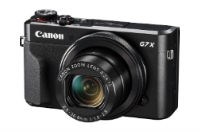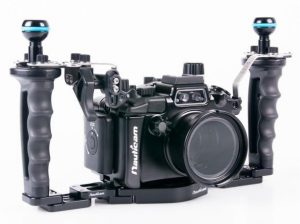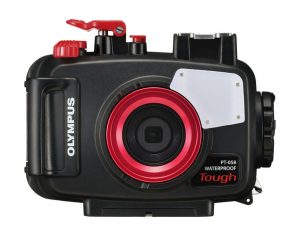Underwater Compacts: Olympus TG-5 vs Canon G7X II vs Sony RX100 V
The abundance of high quality underwater cameras in the market these days are a blessing for us divers! Never has it been so easy and affordable to travel with UW photo gear and get amazing results without breaking the bank or carrying 2 huge Pelican cases.
But with so many great cameras out there, how on earth do you choose the right one??
Pssst, I’ll let you in on a little secret: They’re all great!! You can and will get stunning results with any of the high-end compacts in the market, whether made by Sony, Canon, Olympus, Panasonic or others.
However, there are clearly some differences, and it’s quite easy to pinpoint the right camera for you, by listing the subtle differences between the various options.
In this post I’d like to compare 3 of the most popular options in the market today among underwater photographers: The Olympus Tough TG-5, the Canon G7X Mark II and the Sony RX100 Mark V.
We’ll start with a brief comparison of the camera’s specifications:
 |
 |
 |
|
| Feature | Sony RX100 Mark V | Canon G7X Mark II | Olympus Tough TG-5 |
|---|---|---|---|
| Sensor Type | 20MP – 1″ BSI-CMOS Sensor | 20MP – 1″ BSI-CMOS Sensor | 12MP – 1/2.3″ BSI-CMOS Sensor |
| Lens | 24-70 mm F1.8-2.8 | 24-100mm F1.8-2.8 | 25-100 mm F2.0-4.9 |
| Maximum Video Quality | 4K (3840 x 2160) | 1080p (1920 x 1080) | 4K (3840 x 2160) |
| Slow Motion (Highest Frame Rate) |
960 fps (Full HD) | 60 fps (Full HD) | 120 fps (Full HD) / 480 fps (SD) |
| Continuous Shooting | 24 fps | 8 fps | 20 fps |
| Maximum ISO | 125 – 12800 (expands to 80-25600) | 125 – 12800 (expands to 25600) | 100 – 12800 |
| Waterproof (no housing) | No | No | Yes – 50ft / 15m |
| Connectivity | WiFi / NFC | WiFi / NFC | WiFi / GPS |
| Raw Capability | Yes | Yes | Yes |
| Manual Mode | Yes | Yes | No |
| Underwater Review | RX100 V Review | G7X II Review | Coming soon! |
As you can see, there are several differences that clearly stand out.
Video Comparison – 4K or not 4K
The Canon G7X Mark II lacks 4K. This does not mean it has bad video. It actually produces excellent video! It simply means you cannot shoot 4K with it. 4K is slowly but surely becoming the new standard among TV’s and Monitors, but for the next few years, 1080p (AKA full HD) is still perfectly ok and looks great on nearly every monitor.
Another advantage of 4K is that you can “zoom in” a bit more, by cropping your video after shooting down to 1080p. This allows you to double your zoom without quality loss compared to shooting 1080p in the first place.
Another feature you can notice, is the ability to shoot crazy slow motion on the RX100 V, and even on the TG-5, though it will be in lower resolution. Slow motion turns out beautiful in an underwater environment and fun to experiment with it.
Bottom line, if video is your thing, RX100 V is the way to go.
Note on 4K Video: Not every 4K is better than every 1080p. A video shot at 1080p with an excellent camera such as a DSLR or mirrorless, will likely look better than a 4K video shot with a GoPro or a lesser camera. It’s merely the number of pixels which comprise the frames in the videos.
Note on overheating: The RX100 V is notorious for overheating. When shooting 4K for several minutes, you may experience overheating and the camera will have to shut down for a few minutes to rest and cool down. Whether or not you’re willing to live with that is up to you. For most people, it’s well within their shooting habits and won’t limit them as much as they think.
Lens
Many macro shooters are disappointed with the Sony RX100’s shorter focal length. This is because the longer the focal length, the more magnification you can achieve with a diopter (close-up lens). The RX100 V maxes out at 70mm, while the other two reach 100mm.
True, that does mean you won’t reach the same amount of magnification with the RX100 as the other two, however, it compensates for that with exceptional sharpness and image quality, so that when cropped down, you can still get the same end result with comparable details. Read my blog post about shooting macro with the RX100 here.
Image Quality
Image quality is something that’s hard to determine from dry specs. It’s a combination of optics, sensor, dynamic range and image processor. From my personal tests, I can say that the RX100 V is a winner here, with the G7X II right behind it and the TG-5 is the underdog. The TG-5 does produce excellent photos, but the smaller sensor is no match for the 1″ sensor on its rivals.
Photo Samples
Underwater photos taken with the Olympus TG-5*:
* Disclosure: I used the RX100 V and G7XII in a couple of amazing dive destinations such as Cuba, Cozumel, Bonaire and the Philippines, whereas I only got a chance to test out the TG-5 on a couple of quick dives on the house reef, without wet lenses, so keep that in mind when viewing the photos…
Underwater photos taken with the Sony RX100 V:
Underwater photos taken with the Canon G7X II:
Robustness
Ok, that’s not fair. There’s clearly no match for the TG-5 here. It’s a TOUGH camera. As such, it is built to survive any abuse you inflict upon it. Olympus describes it as “Lifeproof” – waterproof, shockproof, crushproof, freezeproof, and dustproof. Basically, do whatever you want with it, just don’t stick it in the microwave!
The other two are built well, quite sturdy, but you have to be a bit more gentle with them, or at least stick them in a housing near water.
Manual Mode
This is a major issue and one of the downsides of the TG-5. It lacks manual (M) mode. While this is ok for some, who prefer to use the excellent underwater auto modes built in the TG-5, most photographers would be limited by this at some point. To gain full control over your camera, especially when using strobes, manual mode crucial.
That being said, if you’re comfortable using the automatic modes and don’t see yourself messing around with settings too much, then you can definitely do without M mode.
Housing options

Housings for Sony RX100 V
There are plenty of housings to choose from for this camera.
Best value – Fantasea FRX100V Housing
High-end aluminum – Nauticam NA-RX100V
Aluminum work horse – Sea & Sea RX100V
Affordable and reliable – Ikelite Action Housing for RX100 V

Housings for Canon G7X Mark II
The Canon G7X II is also widely supported:
Best value – Fantasea FG7XII Housing
High-end aluminum – Nauticam NA-G7XII
Affordable and reliable – Ikelite Action Housing for G7X Mark II

Housings for Olympus TG-5
Native housing, best value option – Olympus PT-058
Affordable and reliable – Ikelite housing for TG-5
Still can’t decide? Need more info on any of the cameras above? Contact us via the online chat! We’d love to help!
- Native Lenses vs. Wet Lenses for Underwater Photography – December 20, 2023
- The Complete Guide to Practicing at Home for Underwater Photographers – October 4, 2023
- Best Strobe for Underwater – The Ultimate Strobe Guide (Updated!) – June 29, 2023

 CAD
CAD


















20 comments
Thanks for this side-by-side comparative that includes the new TG-5 (on my upgrade wish list). I really wanted the Sony RX V 2 years ago, but ended up buying the TG-4 and love it! Although I give up manual control, I gain a waterproof camera that shoots and performs exceptionally well for a compact camera without breaking the bank. I’ve flooded a Sony camera before and it hurt$! The TG-4 survived a flood inside a housing around 70 feet – that was a relief!
Safe travels, Ran! 🙂
Hi comparing rx100v and lx10 and g7x. Which one is the best?
Hi Shao,
I think the RX100V and LX10 would be superior to the G7X. Between these 2, it would be hard to decide, there is a very good youtube video about it: https://www.youtube.com/watch?v=l2uIFk5EBXQ
1″ Sensor is a massive advantage, with the 1/2.3 sensor than you will need to spend about another $600 on additional strobes to avoid the noise with ISO, but the 1″ works much better in low light. The photos above are not an accurate comparison, lux levels aren’t recorded, not the same environment, water visibility not recorded etc.
Also depends on touchup software vs Auto colour balance.
In my opinion RX100 is more suited to the professional photographer
Hi Rex,
Thanks for your feedback! I agree, I didn’t test them out in ideal conditions as I didn’t have all 3 cameras with me on the same trip.
The photos are mainly to show some samples taken with the cameras.
I certainly agree with your conclusion and my personal favorite is definitely the Sony.
Hi thanks for the article. Looking to invest in a camera as a beginner UW photographer hobbyist, but not break the bank. I see myself originally a point-and-shoot kind of guy to get the hang of it. Landlocked in Illinois, I’m able to take a dive trip one or two times a year. But I would like something that will last me, if I ever get more interested in more than basic shooting (which I can’t yet predict). Olympus Tg-5 feels like definitely more budget friendly but I feel like I could be missing out or regretting in the future if I didn’t try to meet in the middle with the Canon G7x mark II. Any advice?
Hi Tim,
I would definitely recommend the G7X II over the TG-5 in terms of image quality, manual controls and a better overall camera. I think its worth the extra investment.
Tal
Hi!
I have a Canon G1X mk ii. I am thinking of trading it in for an Olympus TG-5. I would like to take macro shots underwater.
Do you think I would regret the upgrade?
Thanks for your time!
Hi Carrie,
You will not regret the upgrade, the TG-5 is an incredible macro camera and while it does not have the best image quality in the market, the lens and macro capabilities certainly cover for that.
Regards, Tal
Hello,
I own a Sony rx100 MV in a nauticam housing, if overall I’m happy with the quality and the possibilities, I would go today to the Canon. It might be strange, but it is due to the partial M (manual) mode. Partial, because the flash is not manual even in manual mode. The flash always send pre-flashs. This means, there is no way to control manually the external flashes and remote flashes (remote triggerfish, trigger angelfish, …). Indeed, they tigger to the pre-flash and therefore are not present during the exposition time.
Maybe this is advanced use of the light, but if we have a manual mode, all should be manual. Including the flash control.
The Canon does it, not Sony.
Best regards,
Hi Pierre-Bernard,
Thanks for sharing this. You can still always put your strobe in manual mode and then it doesn’t matter to you if the camera shoots manual or auto (aside from it draining the battery by firing too high). You can also set the flash exposure compensation in the settings to help this case a big.
Tal
Hello,
I own a Sony rx100 MV ina nauticam housing, if overall I’m happy with the quality and the possibilities, I would go today to Canon. It might be strange, but it is due to the partial M manual mode. Partial, because the flash is not manual even in manual mode. The flash always send pre-flash. This means, there is no way to control manually the external flashes and remote flashes (remote triggerfish, trigger angelfish, …).
Maybe this is advanced use of the light, but if we have a manual mode, all should be manual. Including flah control.
The Canon does it, not Sony.
Hello,
Tal, Thank you for your rply.
I own 2 Z-240, and when firing in manual mode (for the Inon) it fires at the pre-flash of the Sony. Despite the pre-flash cancelling knob. This pre-flash cancelling works fine with a camera firing a flash on manual mode without pre-flash (like Nikon D800). It only tells to the Inon that there is no pre-flash to be expected. But, as far as I know there is no way for the Inon to ignore the pre-flashs and fires in manual mode when the main flash is emitteed.
Do you know a procedure I have not yet tried ?
Best regards
Hi Pierre,
I use the RX100 V all the time, with the Inon Z-240, and almost always use it on manual with the preflash button on the Inon set to pre-flash (button UP).
It works perfectly. The only downside of the lack of manual flash on the camera is that it recycles slower and drains battery faster. But the functionality works great.
I do set my built in flash to -3 to preserve battery power and recycle time as much as possible.
Perhaps if you’re having trouble, it may be your fiber optic cable? Which one are you using?
Btw, I still prefer the Sony over the Canon. The image quality, optics and performance are better. So you made the right choice!
I bought the Olympus TG-5, initially for a trip to Croatia, because I wanted something better than a GoPro for taking long exposures of waterfalls at Plitvice Lakes and Kraka Falls from in the water just below the falls. It did a good job, but I needed an ND filter to slow the camera down to get a longer exposure. F8 is still a bit fast for a bright sunny day to get the soft look on waterfalls. As for video, I think the GoPro does just as good a job as the Olympus and the GoPro 6 & 7 can shoot 4K at 60 and up to 240 frames in 1080P whereas the TG-5 can only do 4K 30 frames or up to 120 frames in 1080P. I would say the image stabilization of the TG-5 is equal to the latest GoPros and the ability to zoom in is pretty awesome. I haven’t had the opportunity to use it for anything yet, but video also works in microscope mode. Very cool!
We also did some snorkeling in the Adriatic and it worked so well for that, I’ve been building on it as a scuba camera. I bought a tray, PT-058 case, Inon S-2000, two 1.5k lumen wide angle video lights and AOI wide angle wet lens. I finally took it out to Les Davis & Redondo in Puget Sound over the last two weeks. I’m actually a bit disappointed with the image quality but I also have a LOT to learn. (Maybe I need to come up to Blaine for some lessons!). I’d say it’s easy to do macro photography, but it may not be the best image compared to the other two cameras. I have friends that shoot with the Sony and it’s always a pain for them to decide “is this dive a macro dive, or a wide angle dive”? I have both covered with the TG-5 and if I chose to, I could even bring the wide angle along ans still shoot macro in normal or microscope mode.
For me, I think the camera is very versatile and easy to use, something I appreciate as I’m just starting with underwater photography but as I grow and get better I can see where I may grow out of it. I really like the layout of the controls of the PT-058 housing. They’re very easy to use even with heavy smurf dry gloves. I find it to be a bit difficult to “burp” the wide angle wet lens in the water with gloves on. With shore dives, it’s not a big deal, but on a boat dive, I’d have people waiting on me as I get it done. I’d love any suggestions on how to do this better from those more experienced in doing this. Can this be done in the on-board dunk tank before you get in the water?
Hey Greg! Thank you so much for the feedback!
It’ll be great if you can join me a on trip one day! Not much to shoot in Blaine but how about Dumaguete? 😉
I do the “burping” on the go, so no one has to wait for you. You could try putting some water in there on the boat, using the rinse tank, but it might spill out by the time you’re in the water and you’ll have to refill it anyway.
Hello I am a beginner in all that concerns photography and I would like to invest in a device that will last, gopros not providing quality photos… I am therefore divided between these two devices, which you advise me -knowing that I am not an expert in photography in general, and that I would basically do macro and videos. Plus the risk of seeing a leak in a tank pushes me a little more towards the TG-5. Thank you for this page and the many information it contains. P.S: I’m french then I apologize for my english 🙂
Hi Ran! I’m a hobby land photographer, and thinking of venturing into underwater photography/videography now that I’m more confident in my diving abilities! I had mostly been waving my GoPro about but now I’m thinking of getting either the TG-5 or RX100V. I usually take both WA and macro shots underwater so would like something versatile. Therefore I was thinking of getting the TG-5 because I would only need to bring one WA wet lens under. However, I understand that the RX100V does have a much larger sensor – so my question is, in your opinion, does that benefit outweigh the need for an extra macro lens and the lowered flexibility of not being able to take both macro and WA shots in the same dive?
Hi Ruben!
I apologize for the late response.
From what you wrote, it sounds like the TG-5 would be the best choice for you.
If you are a novice photographer, and prefer the peace of mind of using a waterproof camera, then the TG-5 with the housing would be perfect. It produces much higher quality photos than GoPro, it’s perfect for macro right out of the box, without any accessories and it can be expanded with additional lights and lenses as you gain more experience.
I would strongly recommend the TG-5 with the Olympus housing bundle.
Hi there!
Sorry for the late response!
First of all – remember that the RX100 V can also do wide and macro on the same dive! You just have to take two lenses with you and store one on the lens holder when not in use. Sure, it’s a bit more of a hassle, but definitely doable.
If you’re looking for a quicker and easier solution, then the TG-5 is the right camera for you. However, the RX100 V has far better image quality, both photo and video, as well as quicker Auto Focus and better colors / optics. If you want the highest quality without compromising on size and keeping it small for travel, then go for the RX100 V with the macro and wide angle lenses.
From what you describe, I think you would be happier with the RX100 V. Yes, it’s worth it! I love that camera!